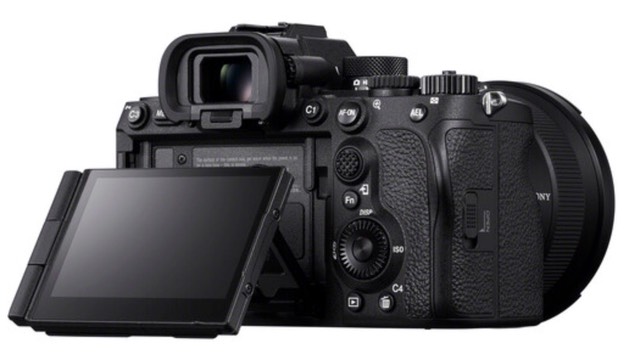Take an A7R Mark IV, improve the image sensor, add the new BIONZ XR image processor, add the heat sink and a new articulating LCD design, improve the IBIS performance (and add a new pixel shift mode that corrects for movement), then improve the autofocus system with a new AI layer, and you have the new camera.
In some ways I feel like I’m writing the same thing over and over this week. Once again we see iterative improvement as opposed to revolutionary improvement. No doubt that Sony is trumpeting loudly as if revolution has taken place, but I’m not expecting this new camera to turn out to be anything more than a refined Mark IV with new video capabilities.
That said, the A7R Mark V is now an 8K video camera (recording up to about 30 minutes without overheating), and clearly should perform slightly better than the model it replaces. But it also increases in price to US$3900 (body only), a US$400 bump.
Can Backside Illumination (BSI) actually be improved? Yes. Even I have been using a shorthand in reporting about BSI. Basically FSI (Frontside Illumination) puts both data/power lines and electronics on the same surface as the light collection. That means that not all of the surface is available for light collection. The shorthand for BSI has been that “all of the surface” is available for light collection (the electronics goes in a layer below light collection). That’s not exactly true. No current BSI implementations have 100% light collection because they all have rounded corners, and some still have a line or two in and among the light collection area. Some corners (Nikon’s 45mp ones, for instance), are highly rounded. Coupled with other aspects of the light well itself (e.g. microlenses, walls, etc.), it isn’t true that 100% of the light hitting the sensor surface gets into the collection area. So, yes, there are still improvements that can be made, though they might not particularly large. Sony didn't make any specific claims in this respect other than to note that the BSI orientation was improved. It seems that much of the image sensor change, however, went into bandwidth processing, as we no longer bin the 4K full frame video output on this camera, but downsample from 6K instead. 4K/60P, however, is done with a 1.24x crop, as is 8K/24P.
Sony makes their biggest claims on the new camera centered around the dual BIONZ XR and new AI processors, particularly regarding the focus system, which now has newly extended subject detection capabilities, including human pose tracking. It was interesting that Sony chose to show comparisons with how the A7R Mark IV failed in a number of autofocus situations where the A7R Mark V succeeds. So much for the fan boy "it focuses perfectly" chants. No doubt the new system is better, and no doubt we'll find new things where we want a bit more capability. That said, I didn't find the Mark IV as a problematic camera for focusing—particularly for the types of things I'd tend to photograph with it—but the Mark V is clearly better, which I always approve of. Do note that the new subject detection also gets very complicated in the controls, as we have animal/bird and animal or bird as separate detections, and you still have to chose what part to focus on (eye, head, body, or some combination). I like this form of control, but some won't, and would probably prefer the Nikon Z9's "just let the camera figure it out" approach.

The new tilting/articulating Rear LCD solves the "tastes great/less filling" debate that's gone on for some time with Rear LCD positioning. Like Panasonic's recent change, you can have it both ways: tilting on the back, or articulating around to the front. Meanwhile, the EVF is now a 9.44m dot one, another upgrade.
The sensor-IS system appears to have been improved (to "8 steps"), though Sony once again has a lot of footnoting that comes into play. More important than the two-axis improvements at the image sensor are the multi-axis capabilities with the combined sensor- and lens-based IS working together.
We get a number of raw options, including medium and small raw files (downsampled) and an improved 16-image Pixel Shift 240mp mode that Sony's desktop software can remove motion from. The Mark V also becomes the first Sony Alpha to support focus shift photography.
Plenty of other new bits and pieces make up this new model. While I know some will be disappointed that the image sensor resolution didn't change, my initial reaction is that many of the things that Sony addressed with this new model actually cover many of my complaints about the older model.
